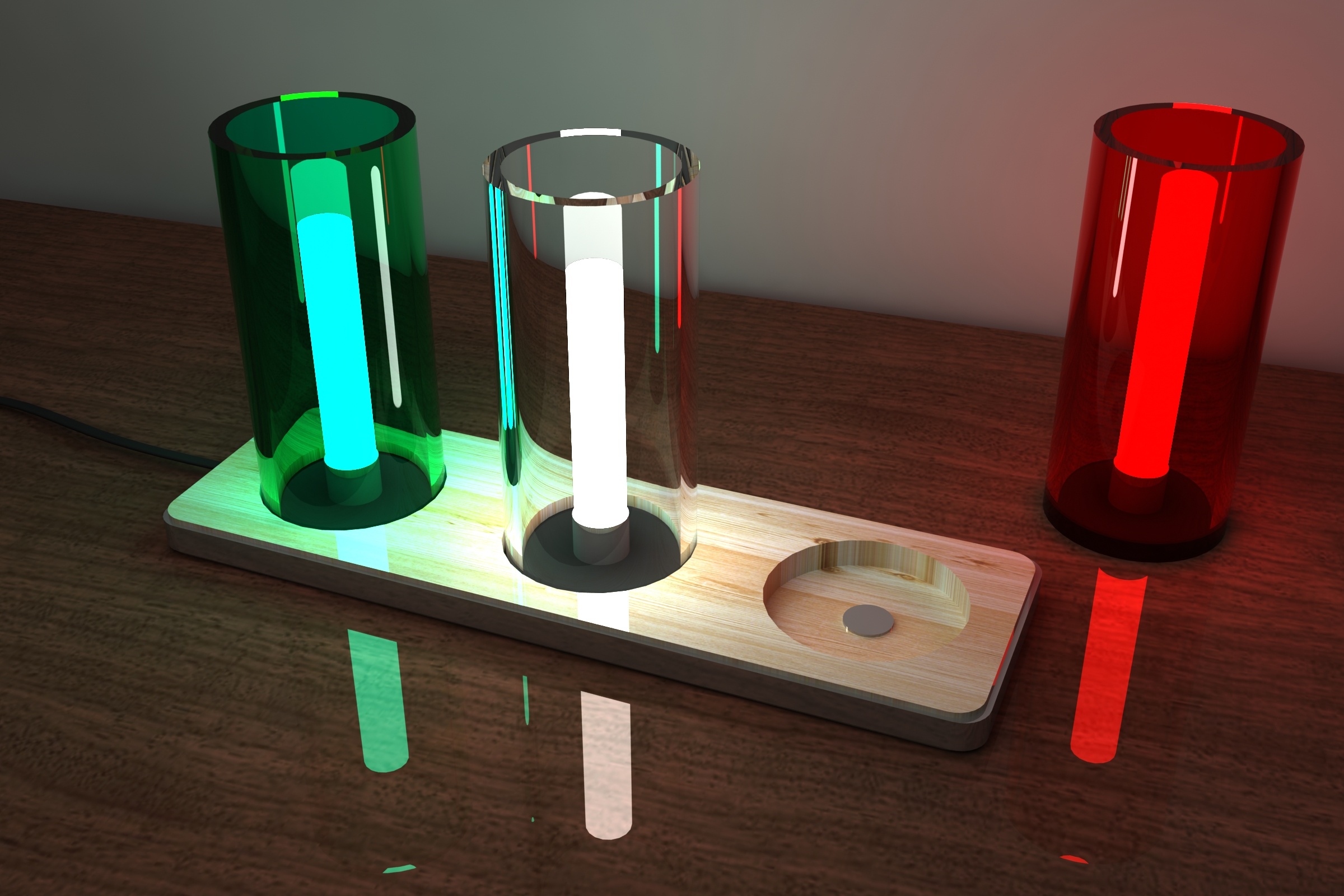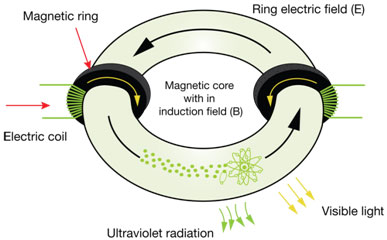Induction Lighting
What is Induction Lighting?
In 1705 Francis Hauksbee discovered that by placing a small amount of mercury in the glass, evacuating the air from it to create a mild vacuum and rubbing the ball in order to build up a charge, a glow was visible. This glow was bright enough to read by. This effect later became the basis of induction lighting.
An Induction Lamp is similar to a fluorescent lamp in that the mercury in a gas filled bulb is excited, emitting UV radiation that in turn is converted into visible white light by the phosphor coating on the bulb.
Induction Lamps do not use internal electrodes, but use a high-frequency generator with a power coupler. The generator produces a radio frequency magnetic field to excite the gas fill.
With no electrodes, the lamp lasts longer – Up to 100,000 hours, with the lamp continuing to produce 70% of its original light output even after 60,000 hours of operation.
The clear advantage of induction lighting is it’s longer life span and reduction in maintenance. In fact where it not for the electronics failing these lamp could last indefinitely.
Other advantages of Induction Lighting is the high energy conversion efficiency of between 62 and 90 lumens/Watt. Low loss of power which means a higher energy output. Low loss of light output due to minimal lumen depreciation compared to other lamp types as filament evaporation and depletion is eliminated.
Instant on/off, no waiting for the lights to warm up.
 Environmentally friendly as induction lamps use much less energy and use less mercury per hour of operation than other conventional lighting due to their long lifespan. No loss of mercury as it is in a solid form and easy to recover for recycling if the lamp is broken or at the end of life.
Environmentally friendly as induction lamps use much less energy and use less mercury per hour of operation than other conventional lighting due to their long lifespan. No loss of mercury as it is in a solid form and easy to recover for recycling if the lamp is broken or at the end of life.
These benefits compare to a saving of between 35% and 55% in energy and maintenance costs compared to other commercial lamps depending on the type that is being replaced.
As with any product there are some disadvantages however if you do your research you should be able to source an induction lamp that is right for you.
Some internal induction lamps use high frequency ballasts and can produce radio frequency interference (RFI) Ensure that you use certified induction lamps that incorporate certified low frequency ballasts.
External induction lamps tend to be very large, especially if higher wattage is required so they are not always suitable for small areas.
Some types of induction lamps contain mercury, which is highly toxic if released into the environment.
FEATURES & BENEFITS AT A GLANCE
Save Costs
• Lamp life and lower wattage reduce energy costs by up to 75%
• The full costs of converting to induction lighting can usually be fully recovered in less than 3 years
• With an expected lifespan of up to 100,000 hours, induction lamps significantly reduce maintenance costs. (labour, used lamp disposal and replacement costs)
Save Energy
• A single 200w induction lamp provides the same illumination as a 400w metal halide lamp, thereby reducing energy consumption by 50%
• By running much cooler heat loss is minimised
• Instant re-strike and no cooling down period reduces wasted energy
• Works on sensors
Improve Lamp Performance
• Lamp lifespan is an expected 100,000 hours, the equivalent of 22 years at 12 hours per day
• Lamps operate at a low temperature, thereby extending the life of the lamp, the fixture and the ballast
• The tube is completely sealed with no filament to burn away, meaning light output doesn’t deteriorate over time
• Lamps can operate in extreme ambient temperatures from -40⁰ C up to 50⁰C
• The quality of supplied electricity has no impact on lamp performance due to wide voltage range
• By operating at a low temperature, lamps and fixtures can be sealed to resist ingress of insects, dust and fumes
• In temperature controlled rooms, induction lights emit less heat
Improve Quality Of Light
• No flicker or glare
• Restores the natural colour rendering of the environment
• Spectral distribution is 20% more efficient than other energy saving lamps
• High luminous efficacy of 85-90 lumens per watt
